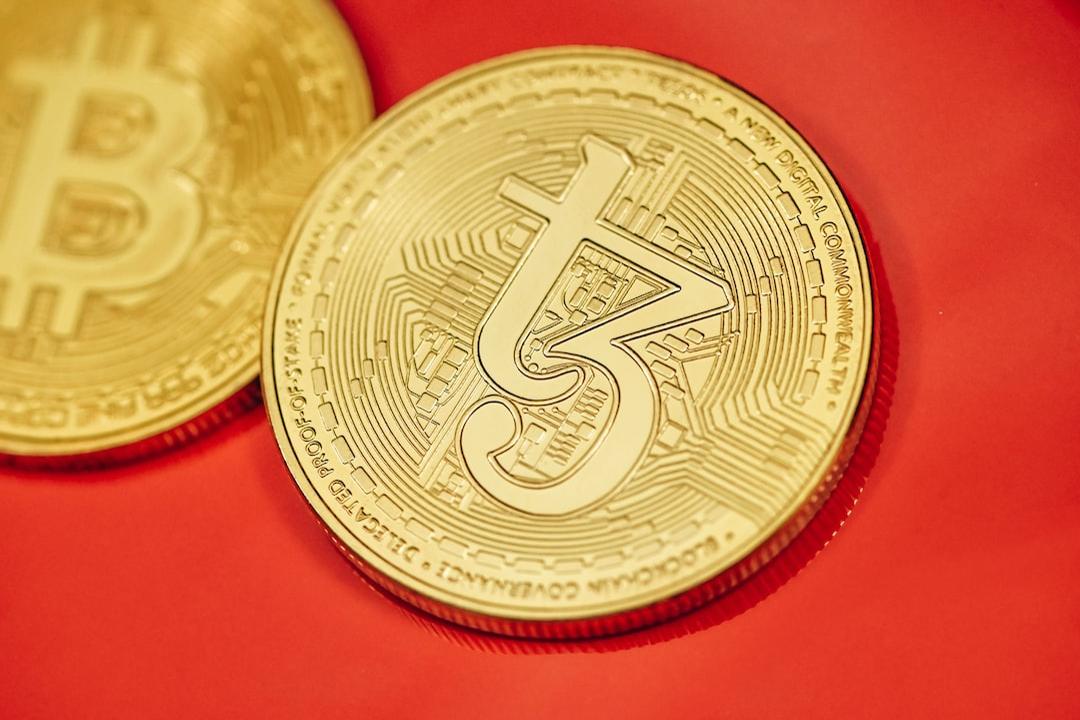After Three Months of Silence, Bitcoin (BTC) Surges Past $100,000!
In the early hours of today, Bitcoin (BTC) forcefully broke through the significant psychological barrier of $100,000, reigniting global investor enthusiasm! According to cryptocurrency data platform CoinMarketCap, Bitcoin soared to a peak price of $104,297 today (the 7th), marking a staggering increase of over 36% in just one month since its recent low of $76,221 on April 7, demonstrating a robust recovery in market confidence.
This surge in the cryptocurrency market was spurred by the rise in U.S. stocks, as Wall Street experienced a broad rally following President Trump’s statement urging, “Buy stocks now!” The Dow Jones Industrial Average climbed 254.48 points (0.62%) to close at 41,368.45 points; the S&P 500 gained 32.66 points (0.58%), reaching 5,663.94 points; while the Nasdaq index soared by 189.98 points (1.07%) to settle at 17,928.14 points, celebrating investors globally! Additionally, recent optimistic signals regarding the UK-U.S. trade agreement and U.S.-China trade negotiations have also fueled positive expectations for global economic recovery. This marks Bitcoin’s return to the $100,000 level, breaking this crucial psychological barrier for the first time since January this year, with Bitcoin’s market share continuing to rise since March 26, reaching 63% as of May 7, setting a new high in this bull market and highlighting the market’s strong momentum.
In light of the vibrant market atmosphere, Peng Yun-Hsien, the founder of Taiwanese cryptocurrency exchange HOYA BIT, specifically reminded investors: “While it is certainly worth celebrating that the market has broken through, it is essential to carefully monitor several key indicators behind the market to guard against potential risks.”
Zero experience? Easy trading – HOYA BIT Cryptocurrency Exchange
https://tw.hoyabit.com/RWA
Bitcoin Returns to $100,000! HOYA BIT’s Peng Yun-Hsien: UK-U.S. Trade Boosts Prices
Peng Yun-Hsien, founder of the Taiwanese cryptocurrency exchange HOYA BIT, analyzed that one of the key driving factors for Bitcoin’s price returning to $100,000 is the recent historic trade agreement between the UK and the U.S. According to the agreement, the tariff on cars exported from the UK to the U.S. will be significantly reduced from the original rate of 27.5% to 10%, with tariffs on steel and aluminum products completely eliminated; the U.S. is expected to significantly boost export volumes by lowering market access thresholds for UK beef and ethanol, and has secured a substantial Boeing aircraft order worth up to $10 billion from the UK government.
Peng Yun-Hsien stated that this move significantly bolstered global investor confidence in future economic recovery, fostering an overall optimistic market sentiment, which in turn increased the willingness to invest in riskier assets. Among these, Bitcoin, recognized globally as a risk indicator asset, was among the first to benefit, as substantial capital actively flowed into the market, driving prices up rapidly. Peng emphasized: “The signing of this agreement marks a critical turning point in the economic and trade relations between the two major global powers, leading investors to anticipate an improving global trade environment, further stimulating activity in global capital markets, and consequently pushing up the prices of Bitcoin and other risk assets.”
U.S. Considers Significant Tariff Reductions on China! Market Anticipates Easing of Tensions
In addition to the UK-U.S. trade agreement, a report by the New York Post on the 8th revealed that the Trump administration is considering a significant reduction in tariffs on Chinese imports from the current 145% to between 50% and 54% as early as next week. This news coincides with the upcoming new round of trade negotiations between high-level officials from the U.S. and China in Switzerland, which the market widely sees as a major turning point for possible easing of U.S.-China trade tensions.
Peng Yun-Hsien further analyzed that although the history of U.S.-China trade negotiations has been long and filled with variables, the Trump administration’s consideration of significantly lowering tariffs clearly expresses the U.S.’s willingness to restart dialogue and sends a strong signal to the market that both sides are more inclined to seek cooperation rather than confrontation on the economic front.
She elaborated that this will significantly benefit companies reliant on the Chinese manufacturing supply chain, such as toys, electronics, and consumer electronics industries. The resulting increase in corporate profits and restoration of consumer confidence will further encourage investors to increase their allocations to risk assets, including cryptocurrencies like Bitcoin, which are expected to receive positive stimulus effects from these developments.
U.S. Establishes First “Strategic Bitcoin Reserve” to Market Response
On May 6, New Hampshire Governor Kelly Ayotte officially signed the HB302 Bill, making New Hampshire the first state in the U.S. to legislate the “Strategic Bitcoin Reserve” (SBR), allowing the state treasury to allocate up to 5% of public funds into digital assets with a market capitalization exceeding $500 billion, namely Bitcoin. Peng Yun-Hsien stated: “This is the first state-level policy in the U.S. that includes Bitcoin in fiscal reserves, which has created a significant demonstration effect for other states and is expected to drive more states to follow suit, further stimulating demand and price increases for Bitcoin.”
Post-Surge Focus: Interest Rate Expectations and International Political-Economic Risks
Peng Yun-Hsien further pointed out that following the surge, investors need to pay special attention to the possible future interest rate cuts by the Federal Reserve (Fed). This is crucial because interest rate cuts will lower borrowing costs, increase liquidity, and stimulate economic activity. In the short term, uncertainty in the economy may lead to a flight to safety, but in the medium to long term, rate cuts will increase the attractiveness of risk assets, including Bitcoin, driving the market’s continued recovery. Currently, the Federal Reserve has decided to maintain the federal funds rate between 4.25% and 4.5%, with the next FOMC meeting scheduled for June 19. Given that the U.S. job data for April far exceeded market expectations, the likelihood of rate cuts has significantly decreased, with most economists pushing back the forecast for the first rate cut of the year from June to September or even later. Investors need to closely monitor updates on these economic data to adjust their investment strategies accordingly.
On the international trade front, the tariff issues between the U.S. and the European Union are also worth close attention. Recent U.S.-EU trade negotiations still show divergences, and failure to effectively resolve the tariff issues may exacerbate fluctuations in global market risk preferences. Additionally, the recent escalation of the India-Pakistan border situation also warrants investors’ vigilance, as any conflict escalation may drive up global risk aversion and impact the stability of financial markets and the performance of risk assets.
On the technical front, despite the recent surge of positive news, Peng Yun-Hsien still reminded investors: “Amid the excitement, investors must pay attention to the bull market support line around $91,000, the 200-day moving average around $89,500, and the key support level at $95,000.” Peng further analyzed: “If Bitcoin can consistently close above $100,000, this will further confirm the bullish trend, with the potential to challenge the historical high of $109,000; however, if it fails to stabilize above $95,000, a larger-scale correction could occur, testing the 200-day moving average at $89,500 or even lower to the bull market support line around $91,000.” Therefore, investors need to continuously monitor market trends to avoid blind optimism.
Diverse Allocation! HOYA BIT’s Peng Yun-Hsien Calls for Cautious Market Responses
Regarding the volatility risk in the market, Peng Yun-Hsien suggested that investors appropriately diversify their investment risks: “In addition to Bitcoin, investors might also consider investing in the five cryptocurrencies included in the strategic reserves by the Trump administration (Bitcoin, Ethereum, Tether, Ripple, Cardano). At the same time, it is also recommended that investors register accounts on different compliant exchanges, such as HOYA BIT, to mitigate the risks of a single platform.” Lastly, Peng Yun-Hsien reminded investors that the market situation is ever-changing and that they must closely track important global financial dynamics to effectively respond to market changes and achieve stable profits.
Further reading: HOYA BIT Exchange Digital Weekly
https://tw.hoyabit.com/news2025

